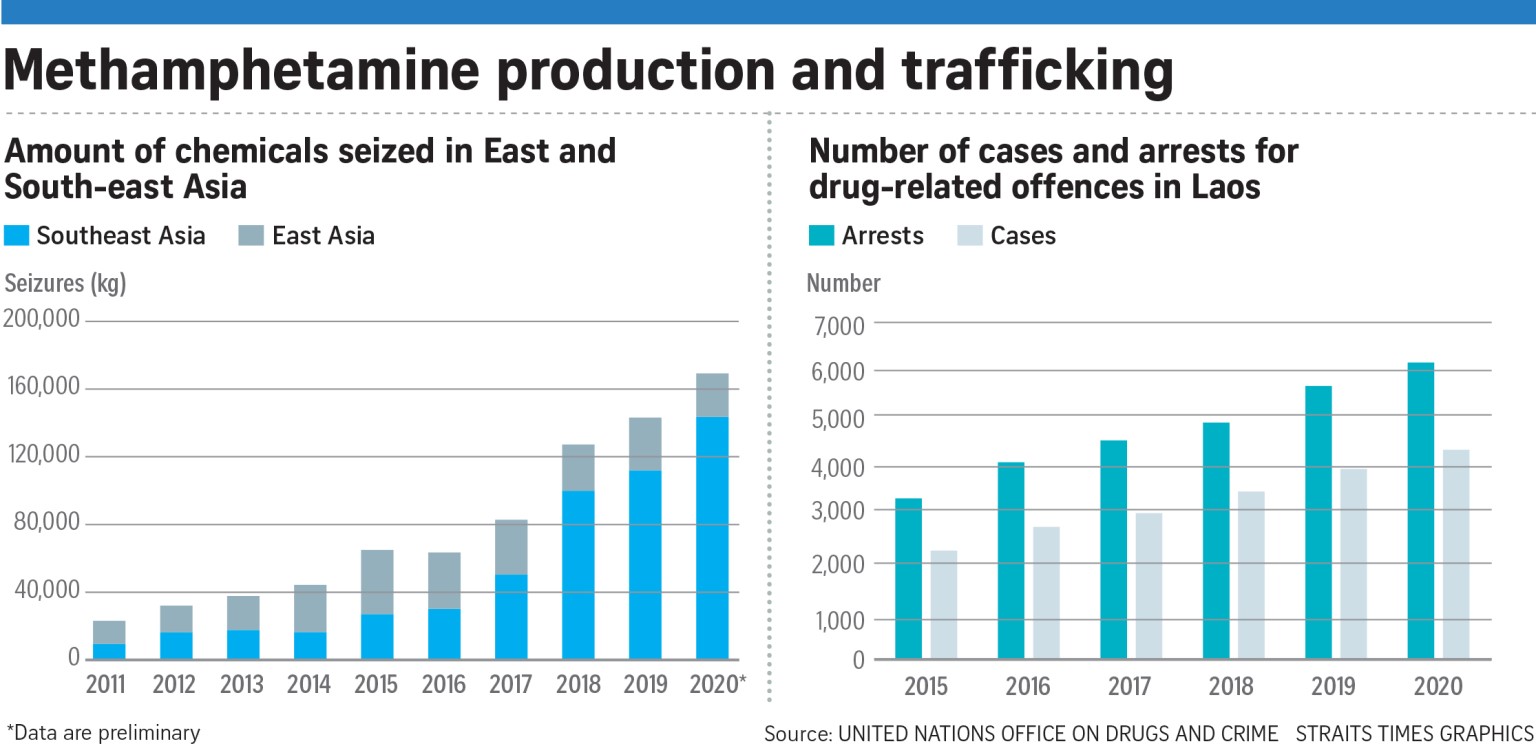Close to 1.2 tonnes of heroin and methamphetamine were discovered by the Thai authorities last Friday. The drugs were hidden in fruit containers in a mangrove forest in the southern province of Satun, waiting to be picked up during high tide and transported to Malaysia.
The find made evident that instead of abating, the tsunami of methamphetamines flooding the region is growing.
A report from the United Nations Office on Drugs and Crime (UNODC) released on June 10 confirms that roughly 170 tonnes of methamphetamine were seized in the region last year - a 19 per cent increase over the 142 tonnes seized in 2019.
Cambodia, Laos, Myanmar, Thailand and Vietnam accounted for 71 per cent of total seizures.
The seizures make it clear that despite tighter border controls on account of the Covid-19 pandemic, transnational organised crime groups thrived last year.
Organised criminal groups are highly mobile and constantly looking for areas where they can make methamphetamines, said Mr Inshik Sim, research officer for illicit drugs at the UNODC in Bangkok. "We should not underestimate organised crime groups," he told The Straits Times' Asian Insider, citing their ability to adapt.
Trafficking from Myanmar to South Asia is a growing concern.
"Over a decade, the methamphetamine market (in South-east Asia) has grown every year," Mr Sim said, adding that Bangladesh shows a similar pattern. "About a decade ago, only 1.3 million meth tablets were seized in Bangladesh. But in 2020, they seized over 40 million.
"The most concerning thing is that there is potential for further growth in Bangladesh and India when you look at the population."
The approach to controlling precursor chemicals used in the manufacture of synthetic drugs must change, Mr Sim said.
Enforcement authorities in the region have been focusing on ephedrine and pseudoephedrine, which are direct chemical precursors required for the manufacture of methamphetamine.
However, non-controlled chemicals that are not really monitored by the authorities can also be used to make methamphetamine, Mr Sim said. And organised crime groups are constantly looking for new chemicals or methods to manufacture methamphetamine. It is really important that the authorities look for non-controlled chemicals, he said.
The report documents the emergence of production - and the seizure of laboratories - in Cambodia and a shift of trafficking to - and through - Laos.
According to the report, in Laos, "since 2018, seizures of chemicals suspected to be destined for the illicit manufacture of drugs in the Golden Triangle area have increased exponentially, reaching more than 125 tonnes in 2020, or more than fivefold the combined amount seized in the preceding five years".
Mr Erlend Falch, officer in charge at the UNODC in Laos, told Asian Insider that as a least developed country, Laos has few resources to counter organised criminal groups. Asked what needs to change in regional responses, he said: "We need... better data collection, use of data to produce intelligence, more information sharing, more cooperation between different countries in the region, and better investigations - ideally investigations that backtrack from seizures."

